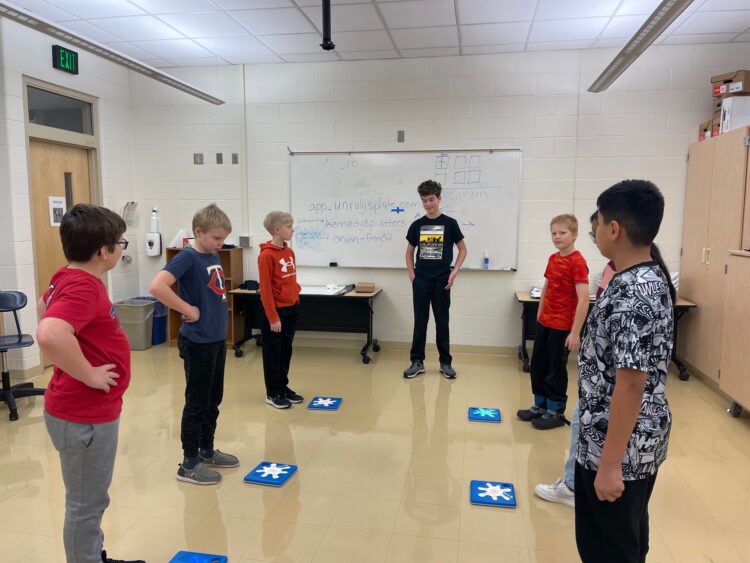by Anja Wuolu
Within the white-painted walls of the K-12 classrooms, students at Kennedy Community School have been experimenting with interactive floor tiles known as Unruly Splats. The school celebrated “Computer Science Week” Dec. 5-9. Gaming, programming and movement roll into one activity under the guide of school librarian and media specialist Holly Nelson.
Each student downloads the Unruly Splats app on their school-issued iPad or Chromebook. The app comes with a few games, and students may choose to develop their own games. Then, when they wish to play the game, they simply pair their device to the 24 “Splats” Kennedy rents. Each Splat is a small, blue platform with a face shaped like an ink splotch. The face may change colors. Students may jump or stomp on the splat to activate it.
Nelson first sought out the Splats during the incredibly isolated era of the coronavirus pandemic. Children were spending more time at home, more time on their devices and less time moving or playing with others.
“I really wanted to see our kids have purposeful movements,” Nelson said, “but also teach some computer coding at the same time because they were on their devices.”
According to code.org, 41 states have established computer science standards for students in grades K-12. Minnesota is not one of them. Despite widespread demand for professional experts in computer science, Minnesota does not have a statewide plan for computer science education. The state does not provide major funding for computer science education.
People like Nelson are working to change that. Nelson is part of the Computer Science for All Movement. She believes Minnesota needs more computer science classes, funding and educator training.
One way Nelson has ensured her own Kennedy students have access to coding is through Unruly Splats. Children in kindergarten can learn the basics of coding. Older children learn more complicated coding, and can develop their own programs.
“I wanted them to have a chance to create something instead of just consume,” Nelson said. “We need kids that can be problem-solvers, critical thinkers.”
When given the chance to design new apps, many students explore new ways of teaching others. Last year, third-grader Brielle Ritter created a program to teach younger kids how to perform jumping jacks. She was then able to take her program to first-graders. This year, eighth-grader Milo Harkins has created a program similar to Jeopardy. Several teachers plan to use his program for lesson reviews.
“I think Splats is a cool program,” Harkins said. “At first I didn’t really think that much of it, but then I decided you know what? This could be really fun to play around with.”
In addition to his Jeopardy program, Harkins has developed Splat Matching, a game in which players must work together to make all the splats the same color. Harkins has been able to share Splat Matching with fifth-grade students, who seemed to enjoy the game. Harkins said he hopes to continue to code, and has begun using Unity, a different computer program to design more complicated programs.
Nelson mentors exploration of coding in many ways outside of Splats. She participated in a nine-month Code Savvy Educators program to learn how to better teach kids tech. She champions an Hour of Code night every year and runs the local chapter of Girls Who Code. Hour of Code is an annual gathering of parents, kids and teachers to learn more about computer science. This year’s Hour of Code took place on Dec. 1, and involved robots, storytelling and more. Girls Who Code is an international organization created to encourage girls, women and nonbinary individuals in technology fields.
“In 1995, 37 percent of computer scientists were women,” states the website for Girls Who Code. “Today, it’s only 24 percent. The percentage will continue to decline if we do nothing. We know the biggest drop off of girls in computer science is between the ages of 13 and 17.”
In Nelson’s Girls Who Code Club, she invites female college students studying computer science to volunteer and help run the club. She said believes it’s important for girls to see people who look like them pursuing the profession.
“I heard a little scuttlebutt going on early on about ‘why not the boys,’” Nelson said, “and the reality is, most girls quit doing math as a focus even though they may be good at and love it, because it becomes very dominated by boys and men…for whatever reasons, society tends to push girls out of those.”
By connecting the elementary school girls with college student women, Nelson said she hopes to encourage girls to continue in computer science. In a society which runs on computer technology, coding is becoming a fundamental skill. Leaving out girls, or leaving out kids in Minnesota, she said, is simply not an option.
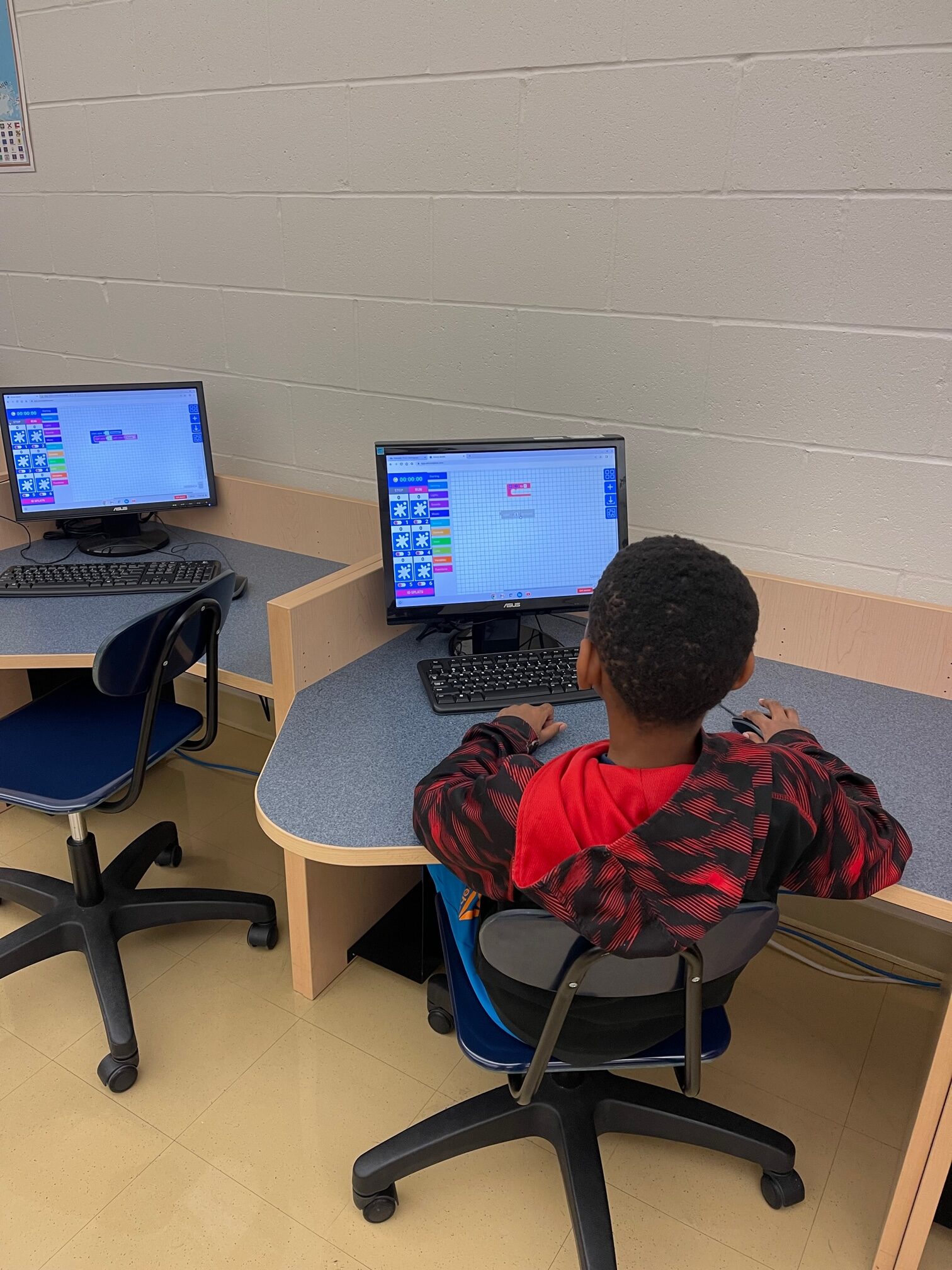
contributed photo.
Amin Sidow uses Unruly Splats program to learn coding skills.
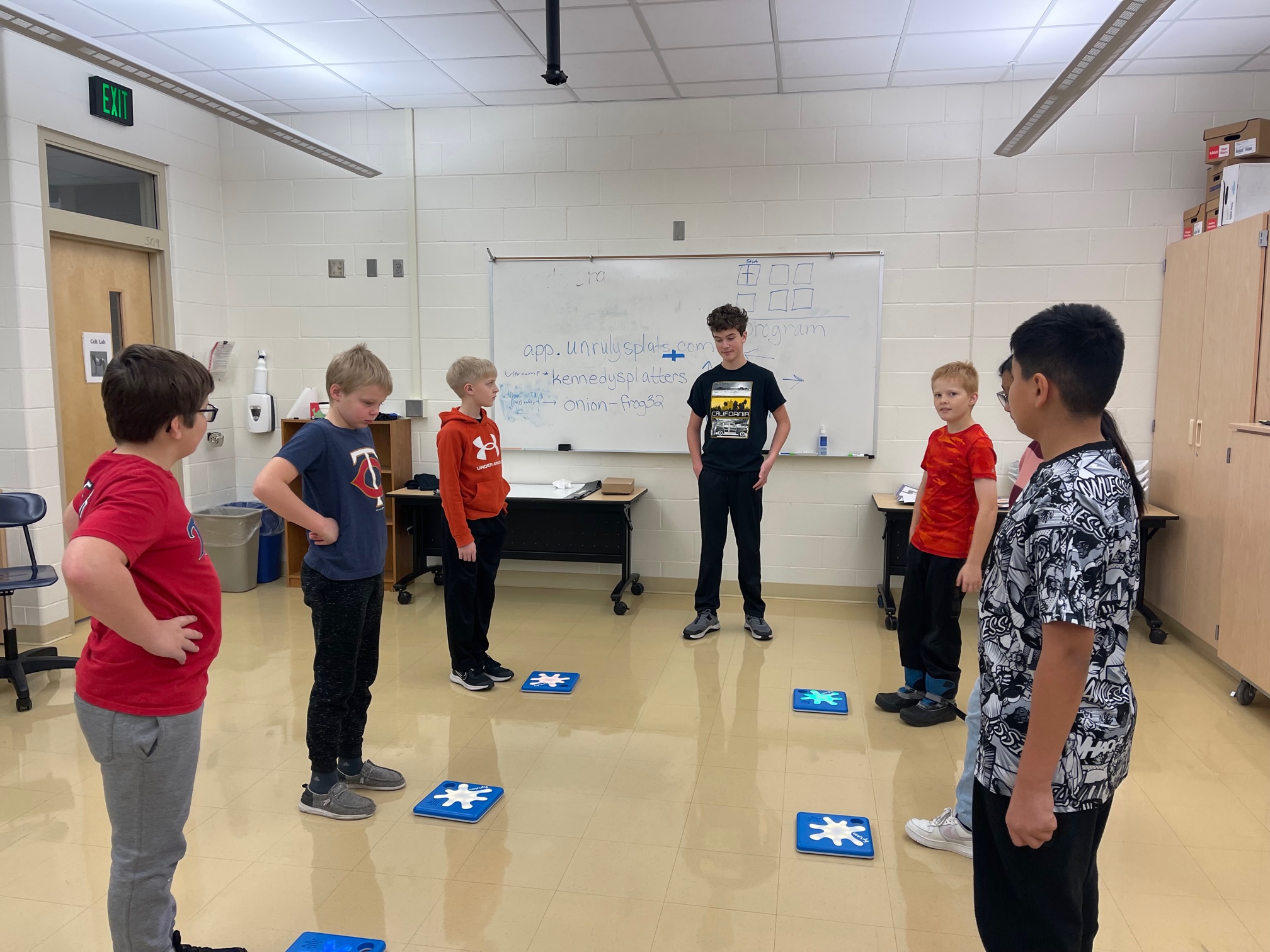
Eighth grader Milo Harkins teaches fifth graders to play his Splat Matching game. Left to right: Jaxson Fuchs, Jasper Brophy, Emmett Lemke, Milo Harkins, Eli Johnson, Emma Ortiz and Alejandro Padilla.
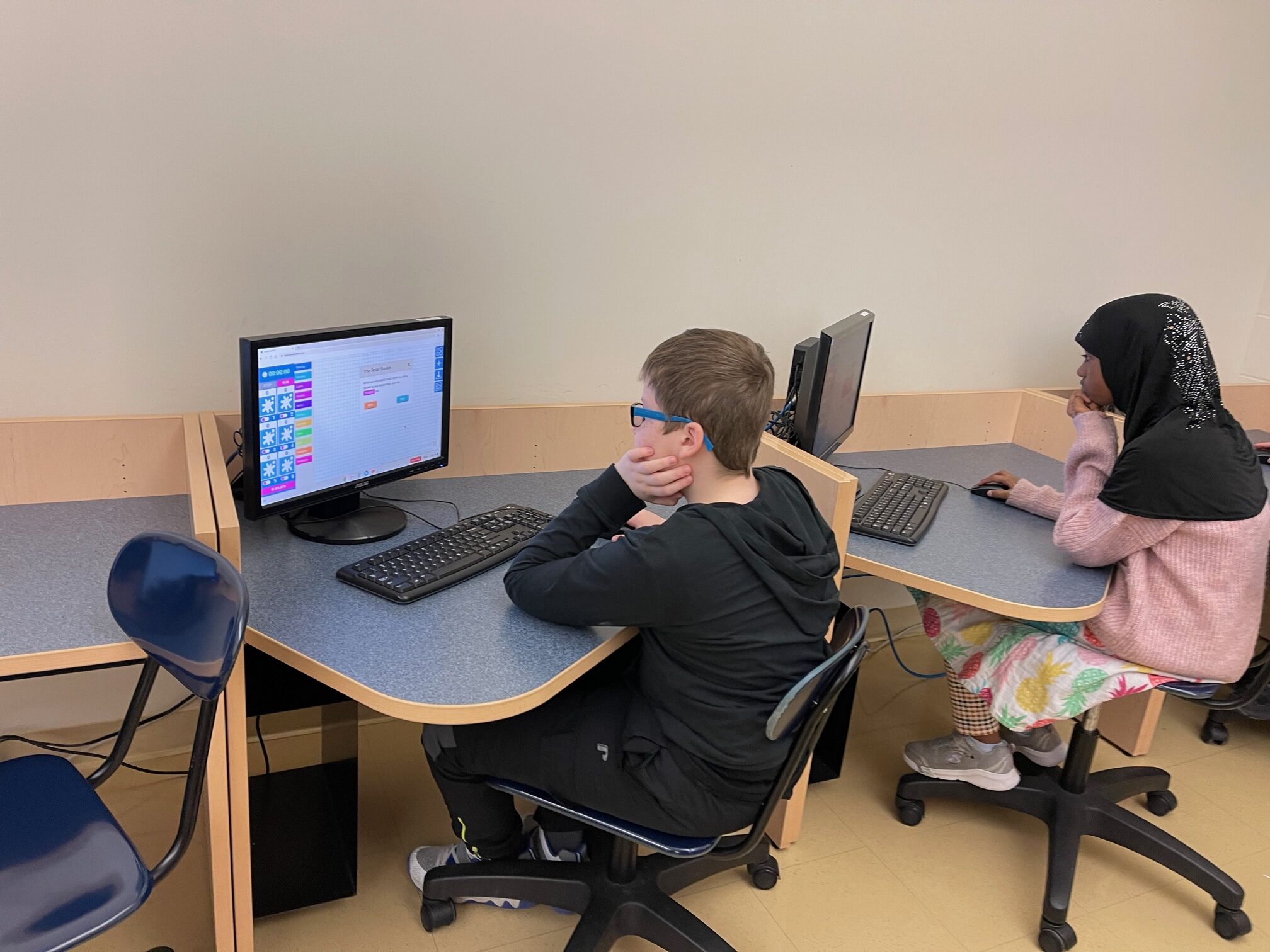
Isaak Lease and Muha Mahumud use Unruly Splats program to learn coding skills.
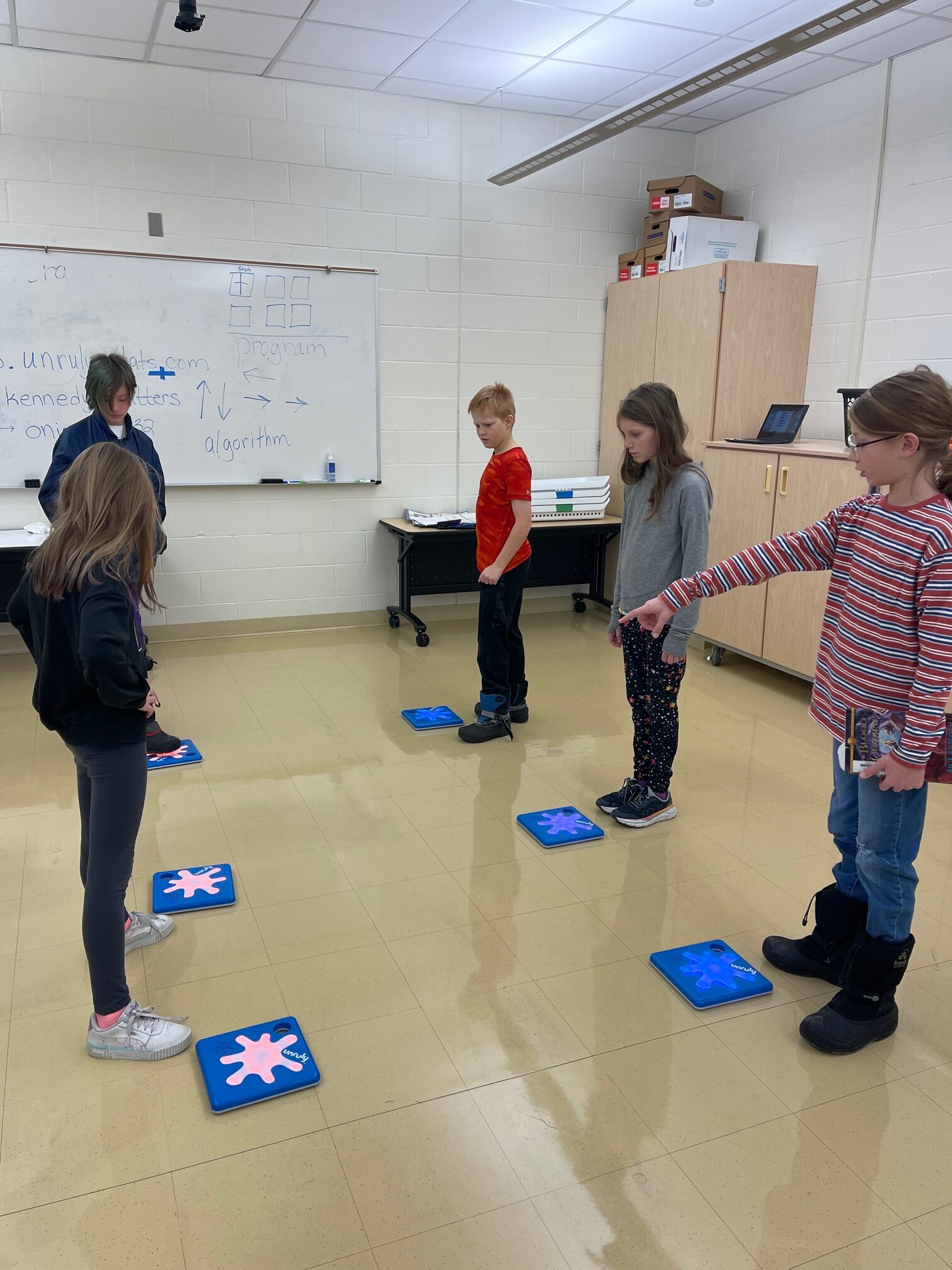
Fifth graders (clockwise from left) Ella Loso, Alma Karger-Gatzow, Eli Johnson, Baylee Turnblom and Caleb Schaefer work together to defeat a game designed by Unruly Splats.
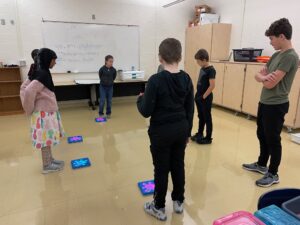
Amin Sidow, Muha Mahmud, Amina Gould, Isaak Lease and Blake Roshaven work together to defeat a game designed by Unruly Splats.



